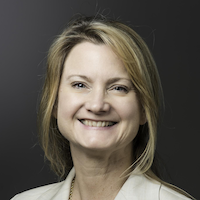PCPs Report Higher Burnout Levels Compared to Others in Same Setting
Understanding and addressing clinician burnout need to be prioritized at a system and local level.

Debora Goldberg, PhD, MHA, MBA
Recent study findings from the College of Health and Human Services at George Mason University showed primary care physicians reported burnout at twice the rate of other healthcare professionals in primary care settings.
“These findings tell us that we need to prioritize understanding and addressing clinician burnout at a system level and at a local level,” lead author Debora Goldberg, PhD, MHA, MBA, said in a statement.
Goldberg and a team of investigators analyzed cross-sectional survey data collected in 2018 by the Heart of Virginia Healthcare cooperative. The data consisted of 1273 primary care physicians, advanced practice clinicians, clinical support staff, and administrative staff.
The investigators measured burnout through a self-reported practice member survey where individuals were asked about their burnout level using a nonproprietary single-item burnout indicator. Respondents were asked to define burnout for themselves so the team could capture the general state of well-being among the healthcare workers.
The participants had to choose 1 of 5 possible answers:
- “I enjoy my work. I have no symptoms of burnout.”
- “Occasionally I am under stress, and I do not always have as much energy as I once did, but I do not feel burned out.”
- “I am definitely burning out and have >1 symptom of burnout, such as physical and emotional exhaustion.”
- “The symptoms of burnout that I am experiencing will not go away. I think about frustrations at work a lot.”
- “I feel completely burned out and often wonder if I can go on practicing. I am at the point where I may need some changes.”
Respondents who answered >3 were classified as being burnt out.
The team used the Change Diagnostic Index to examine feelings, emotions, and attitudes of those as a response to organizational and technological change. The index was used in response to participation in the Heart of Virginia Healthcare initiative. The Change Diagnostic Index consisted of 25 questions based on a five-point scale (strongly agree to strongly disagree). The team used the index to measure the respondents’ perceptions and behaviors across 7 areas: anxiety, frustration, delayed development, rejection of the environment, refusal to participate, withdrawal, and global. The measurement was able to determine levels of anxiety, characterized by tensions, distress, and apprehension.
In the overall sample of 1273 providers, 11% were physicians, 7.8% were advanced practice clinicians, 35.6% were clinical support staff, and 45.6% were the administrative staff. Among those included, 19.5% experienced burnout. There was a significant association between burnout and healthcare professional groups (P <.05).
Breaking down the groups, 31.6% of the physicians, 17.2% of advanced practice clinicians, 18.9% of clinical support staff, and 17.5% of administrative staff reported burnout. After adjusting for hours of work and practice characteristics, physicians were 1.75 (95% CI, 1.09-2.82) times more likely to report burnout than administrative staff.
Healthcare workers were twice as likely to report burnout with higher levels of anxiety (OR, 2.26; 95% CI, 1.67-3.07) and frustration (OR, 1.64; 95% CI, 1.05-2.56) than those with a lower level of anxiety and frustration. Those who experienced increased anxiety and withdrawal were >3 times as likely to report burnout compared to those who did not experience high levels in such areas.
Goldberg and the team suggested understanding the factors associated with burnout in primary care could help in the development of prevention and intervention strategies to reduce burnout. What’s more, policy makers should consider healthcare workers developing new programs and regulatory requirements.
The study, “Indicators of Workplace Burnout Among Physicians, Advanced Practice Clinicians, and Staff in Small to Medium-Sized Primary Care Physicians,” was published online in the Journal of the American Board of Family Medicine.